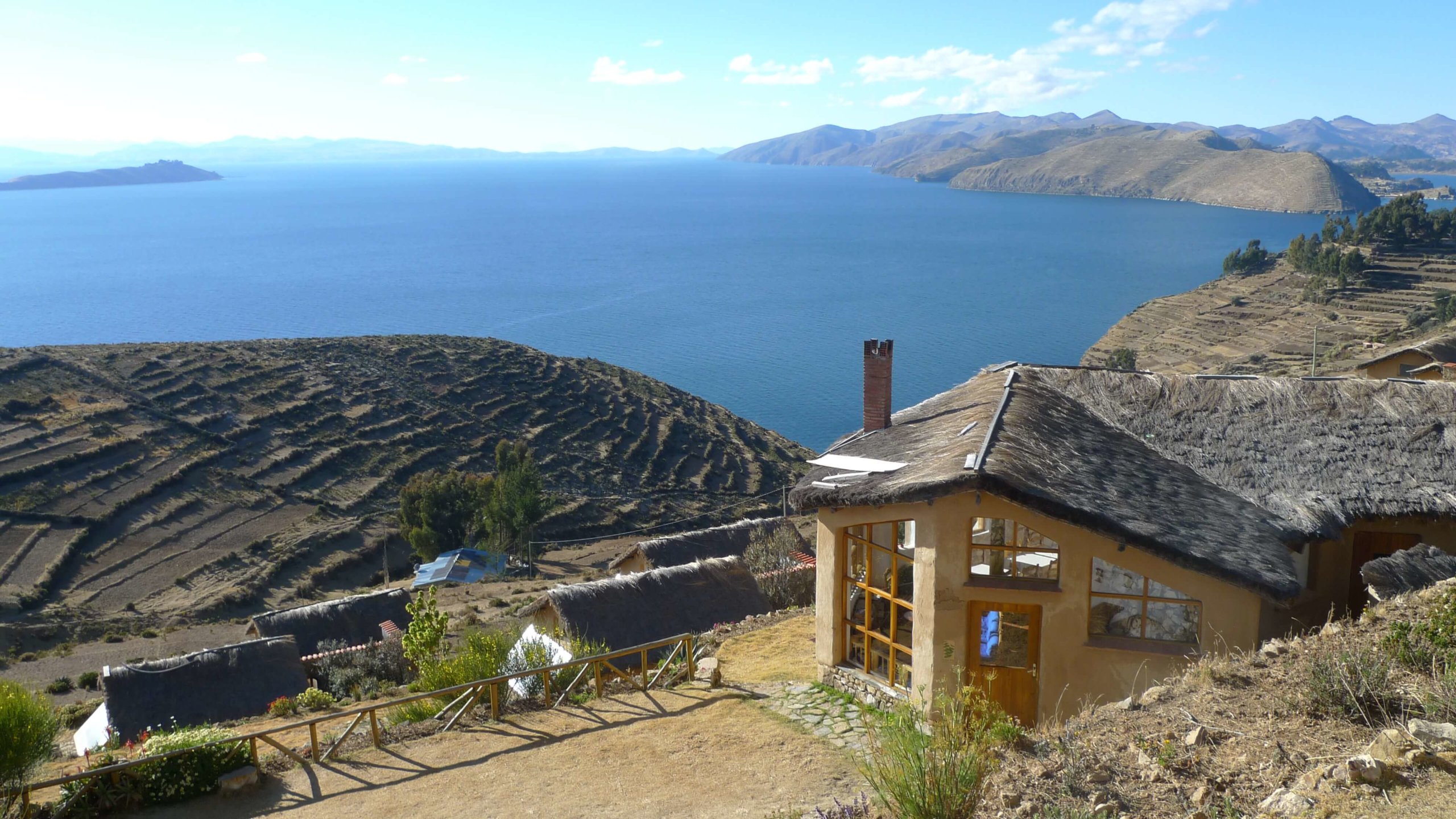How Do You Compare Sacred Sites?
Imagine yourself on a magic carpet taking you to three of the world’s most amazing ancient ruins: Machu Picchu in Peru, Angkor Wat in Cambodia, and Bagan in Myanmar (Burma). Today’s blog post will be your magic carpet ride to these three magical locations, all of which I have visited.
The setting of Machu Picchu is stunning — 8,000 feet high in the Andes mountains outside of Cusco, the ancient capital of the Inca Empire. There are three ways to get from Cusco to Machu Picchu, known as The Lost City of the Incas:
 One way is to catch the train (very expensive) from Cusco. A less costly way is to catch a mini bus and then take a bus from the foot of the mountain (or walk) up to the ruins at the top.
One way is to catch the train (very expensive) from Cusco. A less costly way is to catch a mini bus and then take a bus from the foot of the mountain (or walk) up to the ruins at the top.
Or you can hike the Inca Trail to the ruins—if you make a reservation many months in advance and hire a guide. It is a 2-4 day hike along the mountaintops, and you actually descend (literally, a birds-eye view as seen in the photo above taken in 1975) into the ruins early in the morning, beating the arrival of the tourists coming by train and bus.
I made this hike in 1975 with my good friend and travel buddy Doug Swaim. In that era, you just needed to buy the food to carry along with a tent and sleeping bag. We preceded the current popularity of the trail and thus enjoyed a peaceful hike, joined by 3 Swiss backpackers as well. We traipsed discovering magical settings like this:
 Here is my informal rating system to compare the 3 sites. Ten (10) is the highest score and one (1) is the lowest.
Here is my informal rating system to compare the 3 sites. Ten (10) is the highest score and one (1) is the lowest.
Machu Picchu: Setting/location – 10; Beauty of the ruins – 7; Accessibility to reach the ruins – 2; Distraction caused by tourist crowds – 4
On the other side of the planet, Angkor Wat is located outside of Siem Reap, Cambodia. The name of Angkor Wat applies to the largest structure but there are over 1000 temples set amidst an infrastructure that expanded over 390 sq miles square miles during the height of the Khmer Empire from the 9th to 15th centuries. Angkor Wat, a UNESCO World Heritage site, has over 2,000,000 visitors each year!

The number and beauty of these ruins (many of which have been or are being restored) is particularly impressive. Yes, they have been popularized as backdrops in movies starring Harrison Ford and Angelina Jolie. It can be a rude jolt to experience the popularity of Angkor Wat when you awaken early to make sunrise photos of the main temple. You may think that only a few will get up so early (4 AM) in order to be at the site ready to the photograph at sunrise—but you will be one of throngs of tourists also wanting to get the iconic shot of the sun rising behind the main temple complex. At least 300 – 500 tourists jostle with each other for good camera position—shutterbugs with everything from high end cameras to point and shoots. There is one desirable location, and of course that is where everyone wants to be. It is a “scene” as you can see in the photo below:
 And when you explore the temples, expect to rub elbows with many other visitors:
And when you explore the temples, expect to rub elbows with many other visitors:
 On our Small Footprint Travels tour to Cambodia & Laos, we avoid the crowds and enter the complex on a different road, walking alone with our local guide, enjoying the symphony of jungle sounds. We arrive to witness the sunrise from a different location and look across the moat at the many tourists congregated on “the spot”.
On our Small Footprint Travels tour to Cambodia & Laos, we avoid the crowds and enter the complex on a different road, walking alone with our local guide, enjoying the symphony of jungle sounds. We arrive to witness the sunrise from a different location and look across the moat at the many tourists congregated on “the spot”.
Angkor Wat: Setting/location – 7; Beauty of the ruins – 9; Accessibility to reach the ruins – 6; Distraction due to tourist crowds – 1 (i.e. the number of tourists).
Which brings us to the last stop, which is the least known and least visited of this group: Bagan in Myanmar (Burma). Had Myanmar not been off limits to tourism for so many years these ruins could be as well visited as Angkor Wat. One of the most captivating aspects of Bagan (formerly, the kingdom of Pagan from the 9th to 13th centuries AD) is the feeling of having these ruins to yourself. In a sense you do, as they are over 2,200 temples & structures spread over a 26 square mile plain in central Myanmar—and there are relatively few (compared to Angkor Wat & Machu Picchu) tourists found here:
 The stunning landscape of pagodas and temples has changed little in 1500 years. Only a handful of the temples are regularly visited and many can be climbed via steps to give a jaw-dropping view of a mystical landscape seemingly untouched by time or tourism. For the most unique perspective, you can float over the temples in a hot air balloon at sunrise. It is an unforgettable experience:
The stunning landscape of pagodas and temples has changed little in 1500 years. Only a handful of the temples are regularly visited and many can be climbed via steps to give a jaw-dropping view of a mystical landscape seemingly untouched by time or tourism. For the most unique perspective, you can float over the temples in a hot air balloon at sunrise. It is an unforgettable experience:
 On our Small Footprint Travels journey to Burma coming in November we will spend 3 days in Bagan, touring the temples and having the luxury of time to explore this spectacular area. In addition to guided activities, we also give our travelers time to strike out on their own to discover quiet sites and photo-worthy landscapes. Some like to meander slowly in a horse-drawn cart; the drivers are well versed in the legends and history of Bagan. Others in our small group like to hop on a bike to get some exercise while exploring the area. At the end of the day, a dip in the pool or a spa treatment at the hotel is the way to relax and reflect on the splendor you have taken in.
On our Small Footprint Travels journey to Burma coming in November we will spend 3 days in Bagan, touring the temples and having the luxury of time to explore this spectacular area. In addition to guided activities, we also give our travelers time to strike out on their own to discover quiet sites and photo-worthy landscapes. Some like to meander slowly in a horse-drawn cart; the drivers are well versed in the legends and history of Bagan. Others in our small group like to hop on a bike to get some exercise while exploring the area. At the end of the day, a dip in the pool or a spa treatment at the hotel is the way to relax and reflect on the splendor you have taken in.
Bagan: Setting/location – 10; Beauty of the ruins – 7; Accessibility to reach the ruins – 8; Distraction due to tourist crowds – 8 (almost none).
So, indeed I am lucky to have spent time at all three of these sites. To my mind, Bagan is one of the world’s most spectacular archeological sites and outshines Peru’s Machu Picchu and Cambodia’s Angkor Wat. All are divine and all have their own magic, but the numbers of tourists can jeopardize these sites. That has not happened yet at Bagan, so join us in Burma while it still remains relatively untouched.
Leave a comment below sharing your opinion about any of these sites. And please share this post with others who may be interested. Thank you!
Upcoming Small Footprint Travels Tours:
Hidden Thailand & Laos: January 31 – February 15, 2015
Bolivian Adventures: August 18 – September 2, 2015
© Benjamin Porter 2014. All Rights Reserved.



